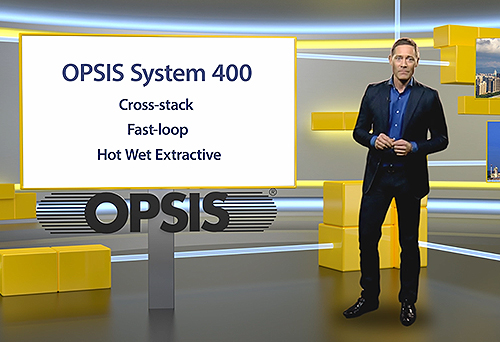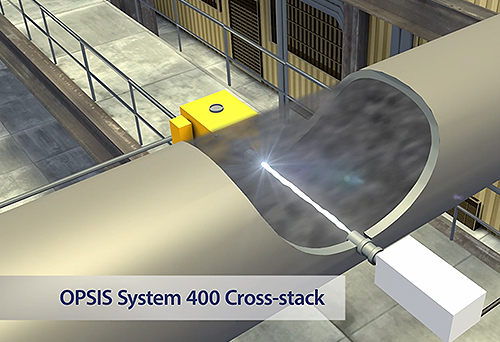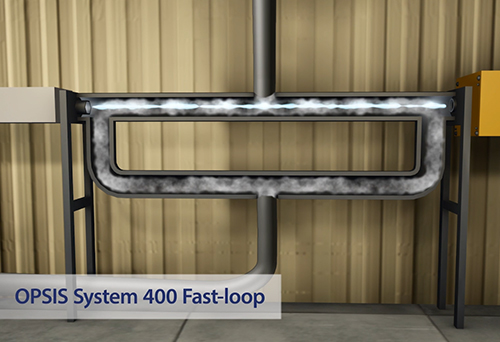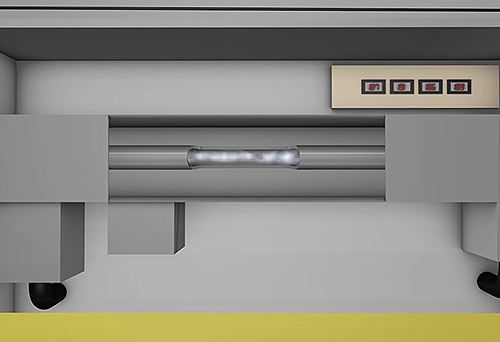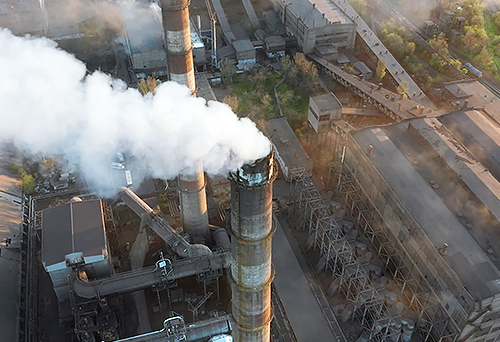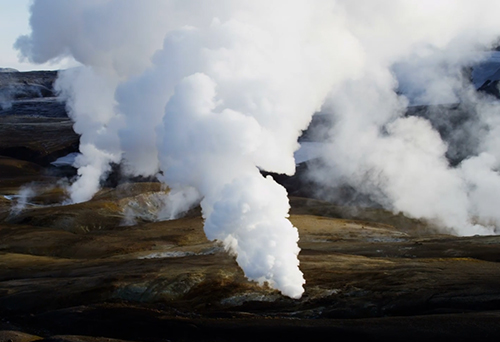Difficult to choose products? Let us help you!
OPSIS offers several affordable packages that include everything needed to get started with the monitoring of emissions or processes.
SYSTEM 400 - A GOOD START
An OPSIS System 400 always contains emitter, receiver, optical fibre, and analyser. The system is offered in three different technical versions:
- System 400CS where the light along the monitoring path is sent directly through the gas channel ("Cross Stack")
- System 400FL where the monitoring path is placed in a bypass line with fast gas exchange ("Fast Loop")
- System 400HWE where a small flow of gas is extracted at the monitoring point and led via a heated hose to the monitoring path where the gas concentration is analysed ("Hot Wet Exctractive").
In all cases, the length of the monitoring path is typically 1-2 metres, but it is often possible to use both shorter and longer sections. The choice of design depends on the conditions at the monitoring site. Read more about the systems further down the page.
Regardless of the design, the systems can be extended with additional gases, more measuring paths, and also sensors and other accessories, both when ordering and afterwards. In many cases, a single monitoring system can monitor the concentrations of all relevant substances.
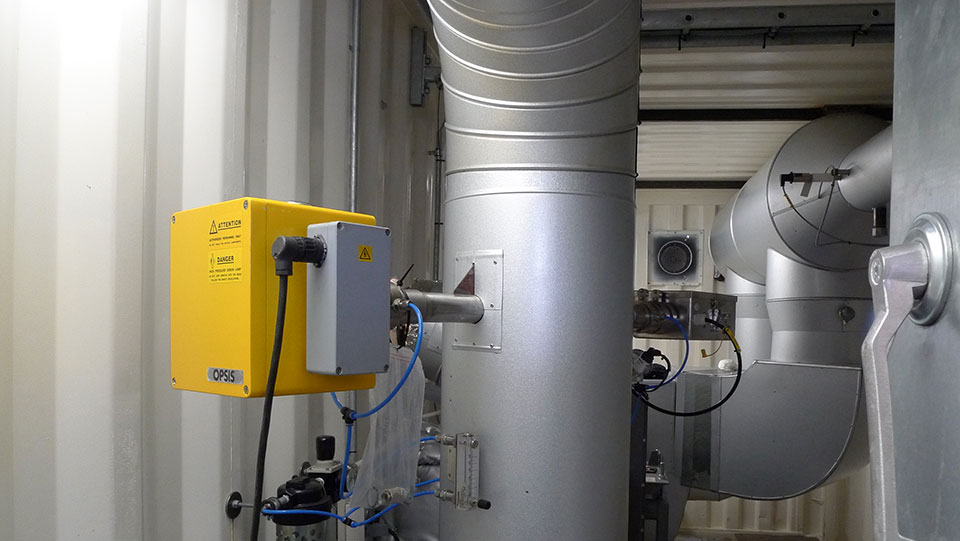
READY-MADE PACKAGES FOR SELECTED GASES
We also offer System 400 packages for monitoring the concentrations of some specific substances:
- System 400BASIC: A 400CS system calibrated to monitor the levels of SO2, NO, and NO2, suitable for basic emissions monitoring at combustion facilities.
- System 400EXT: A System 400BASIC supplemented with the capability to measure the concentrations of CO and H2O.
- System 400WASTE: A System 400EXT with the addition of HCl measurement. The system is particularly suitable for monitoring emissions from waste incinerators.
- System 400HG: Basically a System 400HWE equipped with a converter and calibrated for the monitoring of both total mercury (THg) and elemental mercury (Hg0). Also this system is well suited for emission monitoring at waste incineration plants.
OPSIS monitoring systems based on cost-effective, non-contact technology provide high availability of representative data. The systems have low energy consumption and require minimal maintenance.
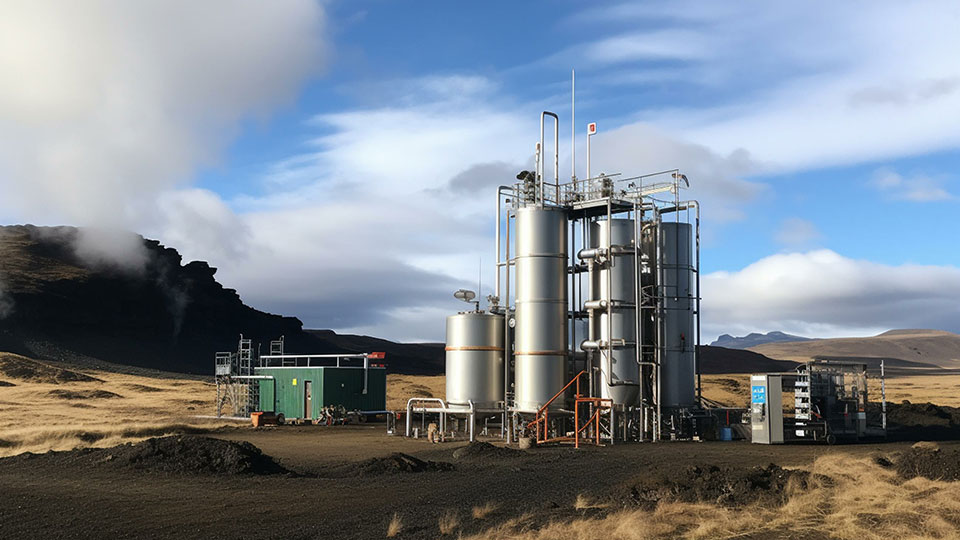
SYSTEM 400CS (CROSS-STACK)
System 400CS ("cross-stack") is a cost-effective, high-performance monitoring system developed to monitor the concentrations of gaseous substances at power plants and other sites. In the basic version (e.g. System 400BASIC), the measurements are based on UV-DOAS technology, which makes it possible to monitor a wide range of gaseous compounds. An analyser of the AR600 model evaluates light from a monitoring path that runs straight through the gas channel. The monitoring method is also called "in-situ". Examples of substances that can be monitored are NO, NH3, SO2, Hg, and NO2.
The 400CS system can be supplemented with an AR650 analyser using FTIR-DOAS technology. This allows the measurement of more gaseous substances, such as CO, CO2, HCl, and HF. The illustration shows a System 400CS with both AR600 and AR650 analysers.
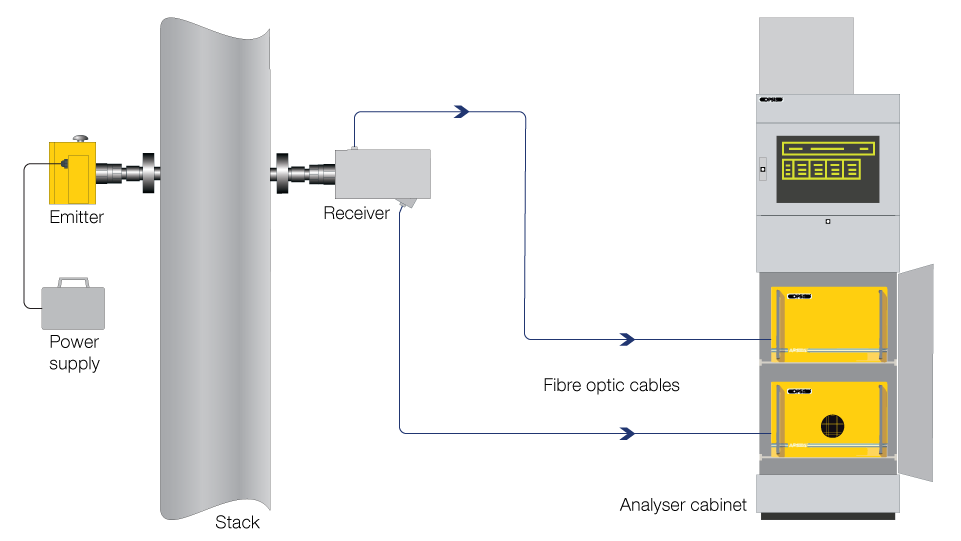
SYSTEM 400FL (FAST-LOOP)
If the gas duct is difficult to access or if it limits the length of the monitoring path too much, a System 400FL is a good alternative to the System 400CS. An insulated pipe is connected between the monitoring point and a separately located closed monitoring path (measurement cell). The outlet from the monitoring path is returned to the gas duct. The flow through the pipe and monitoring path can often be driven by the existing pressure drop in the flue gas duct, or a dedicated fan is fitted to the outlet of the measurement cell.
The flow through the pipe and measurement cell is normally high, which ensures that the gas being measured has the same composition as the gas in the flue. It is often possible to have long distances between the gas duct and the measurement cell, and a System 400FL can therefore also be an alternative if the optical fibre in a System 400CS would be too long.
As with the System 400CS, a System 400FL is normally built around an AR600 analyser. It can be complemented with an AR650 for the detection of even more types of gases.
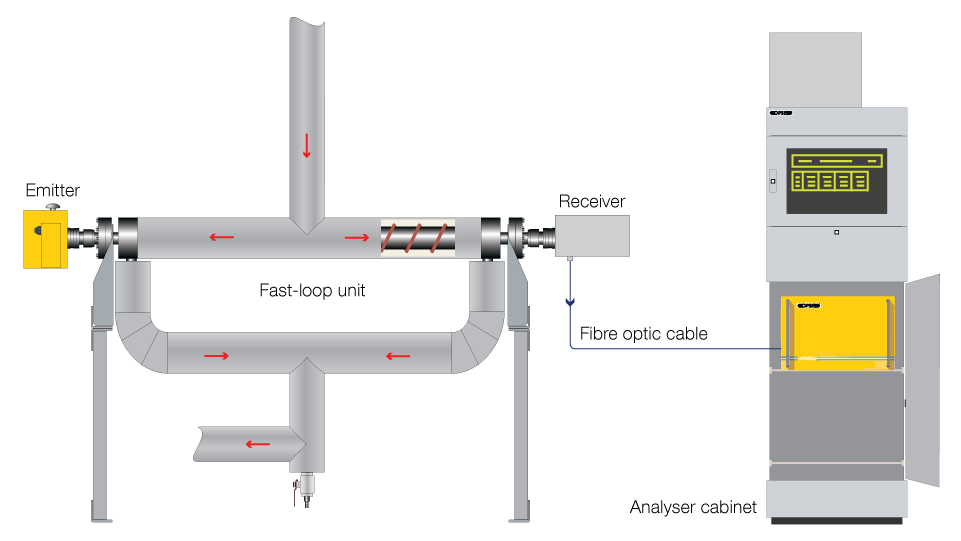
SYSTEM 400HWE (HOT-WET-EXTRACTIVE)
A System 400HWE is similar to a System 400FL in that the monitoring path is located in a dedicated measurement cell separated from the gas channel. However, the extraction of the gas from the monitoring point is done with a more traditional sampling unit. This results in a lower gas flow and thus slower gas exchange in the measurement cell but can simplify installation. As with the other system solutions, an AR600 is usually used, and the system can be supplemented with an AR650.
A particular advantage of System 400HWE is that it can be fitted with a gas converter on the inlet to the measurement cell. This enables monitoring of additional types of pollutants, for example:
- total mercury
- H2S in low concentrations
- total reduced sulfur (TRS).
By using two measuring cells with a converter in between, all other types of gases can also be monitored. This provides a very cost-effective monitoring system with low maintenance requirements.
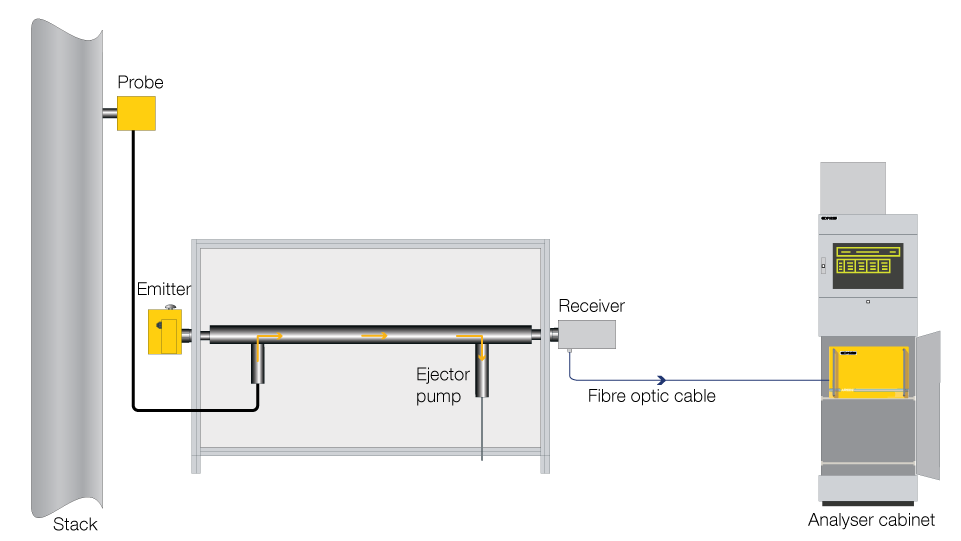
TESTED AND APPROVED
OPSIS DOAS systems have been tested and approved by several international test institutes and national authorities, including the German TÜV and under British MCERTS standards.

BLOGS ABOUT OUR PRODUCTS
On our blog you can read more about our products and what they are used for, for example:
Continuous Emissions Monitoring - What, Why and How?
Gas Concentration Monitoring in the Industry
Pollutant Reduction Control and Continuous Emissions Monitoring at Waste-to-Energy Plants


